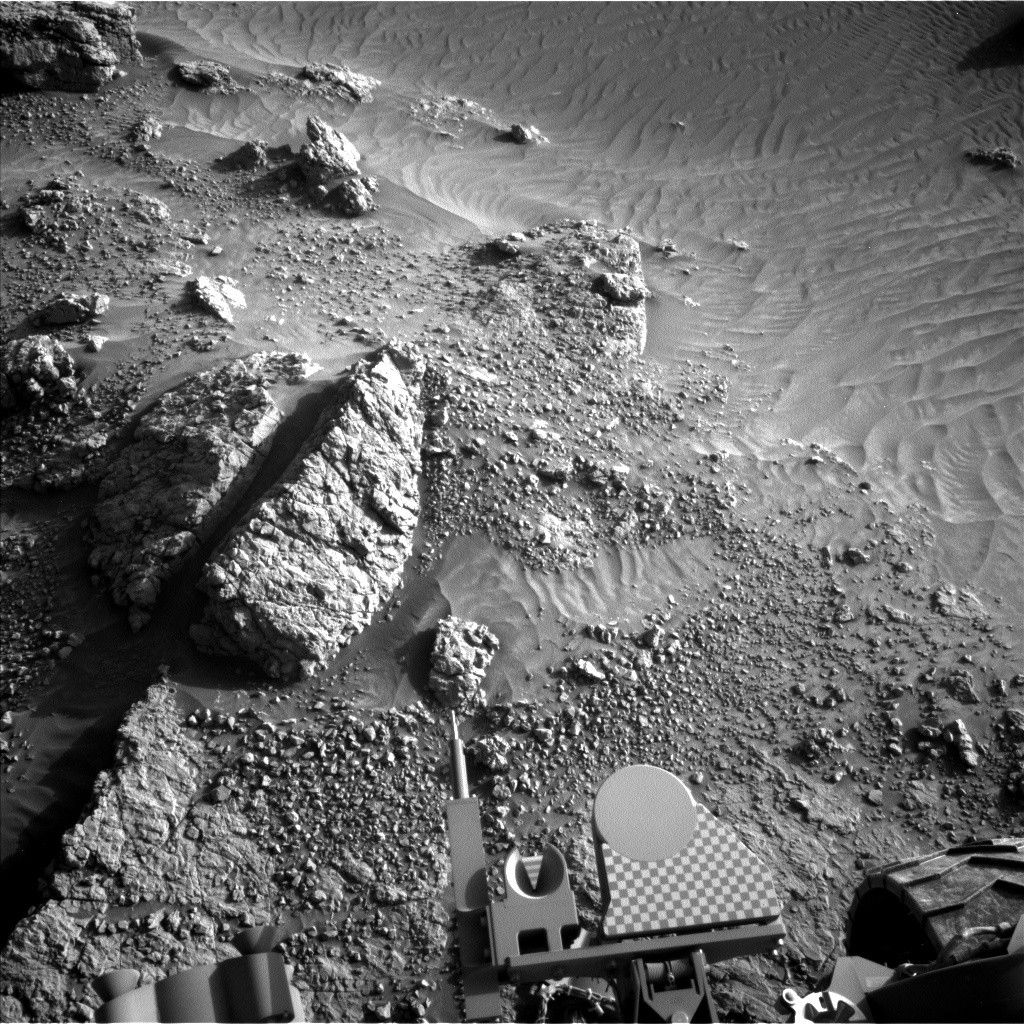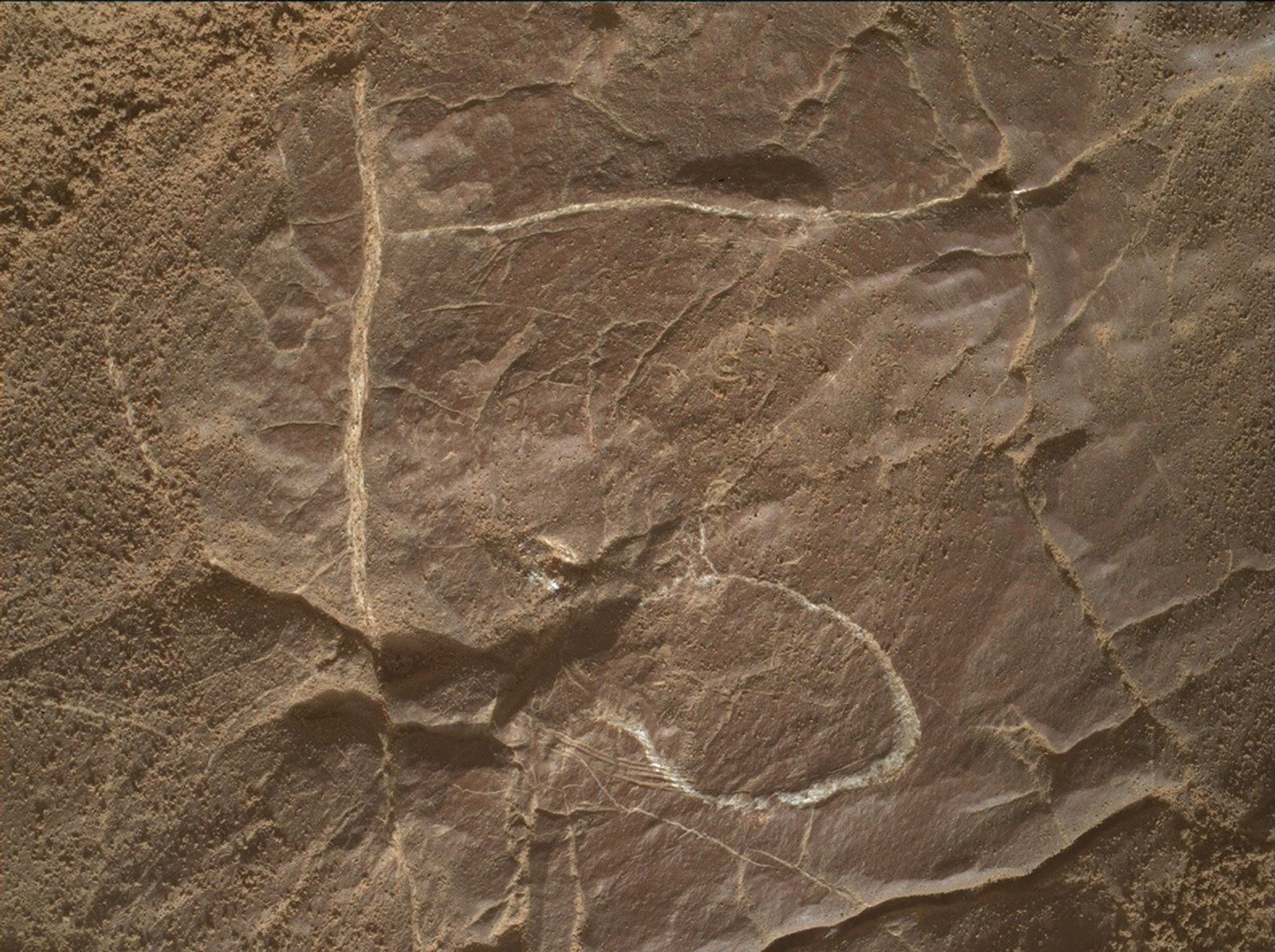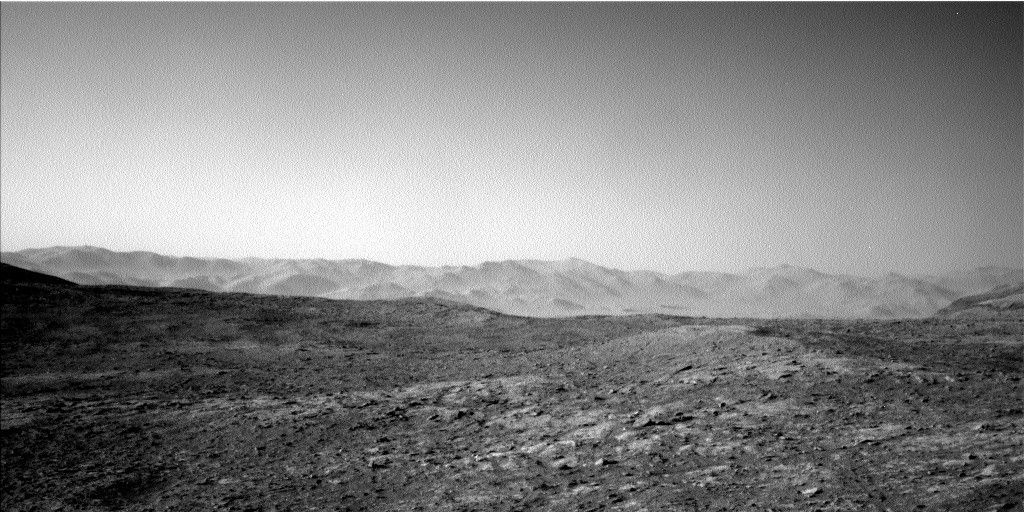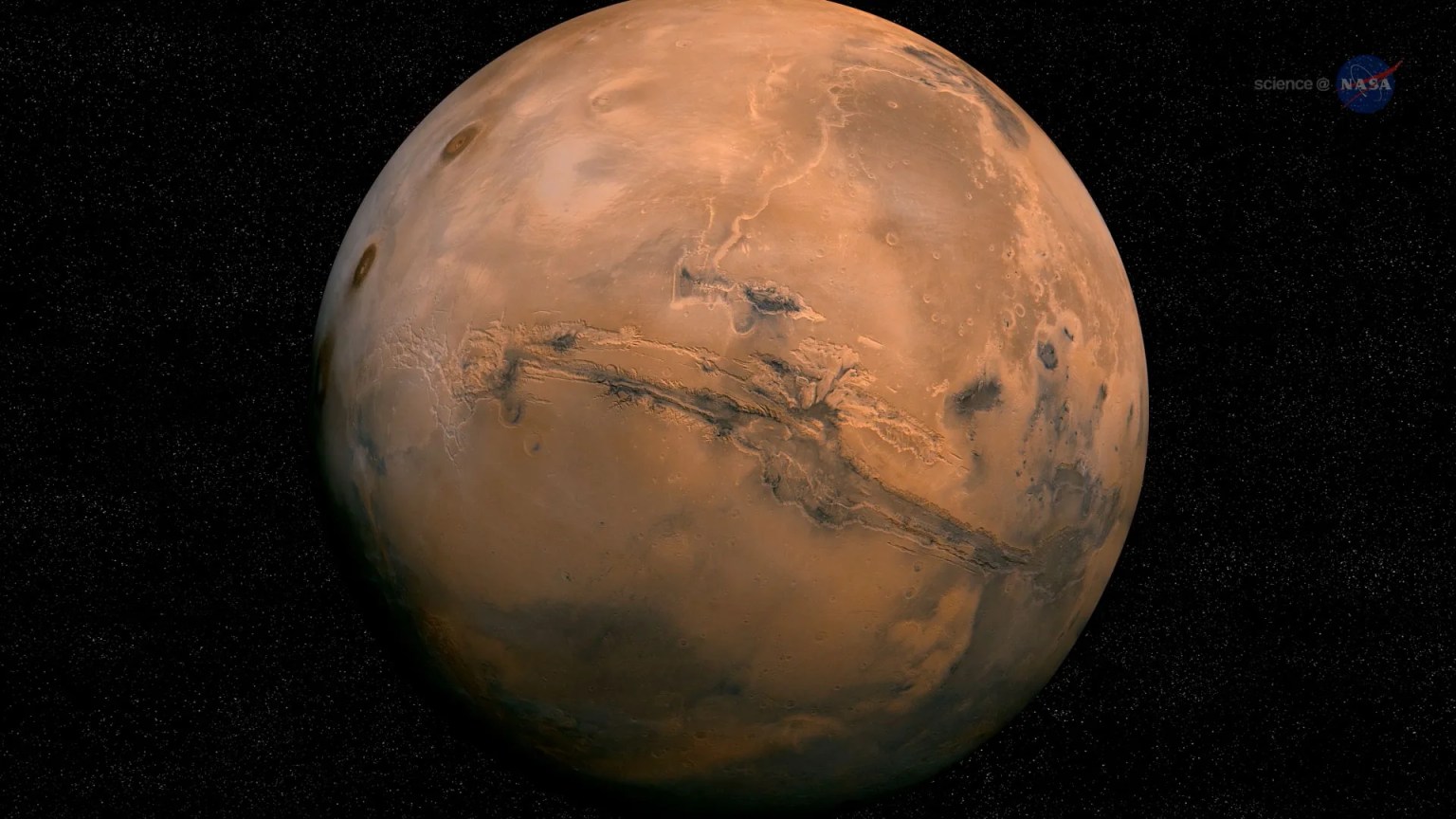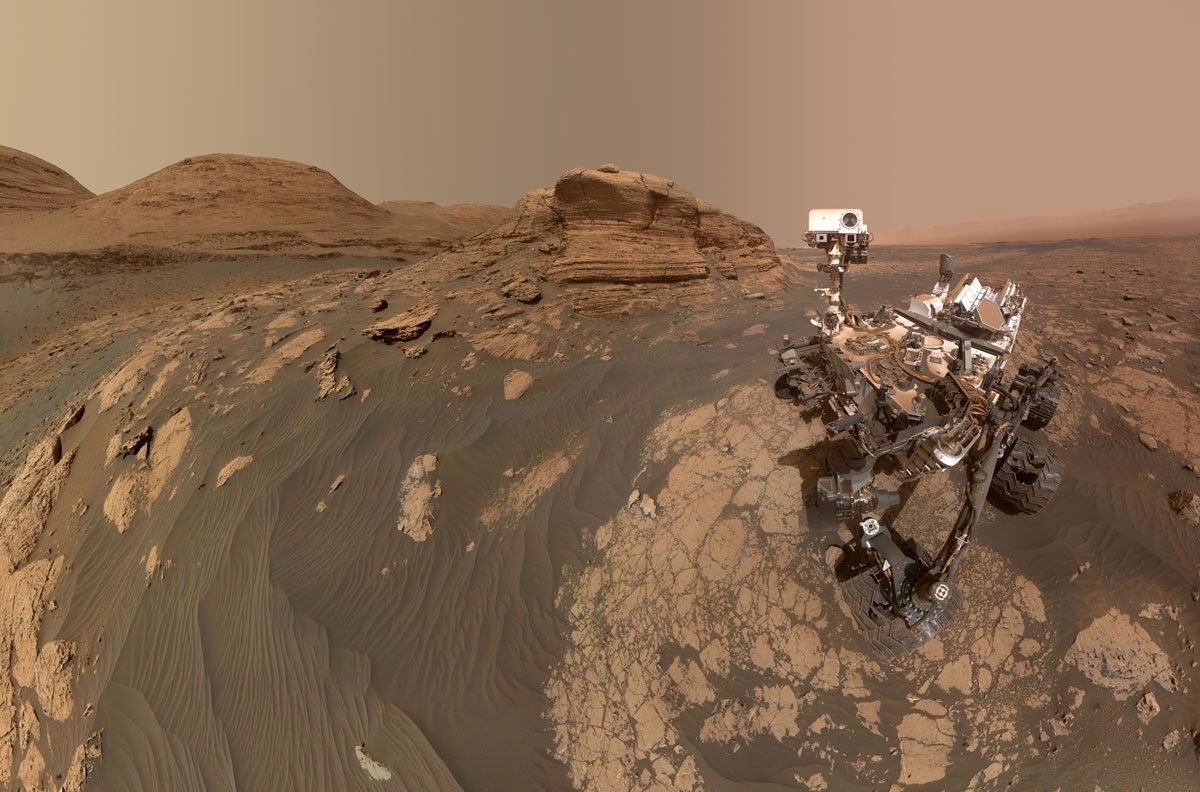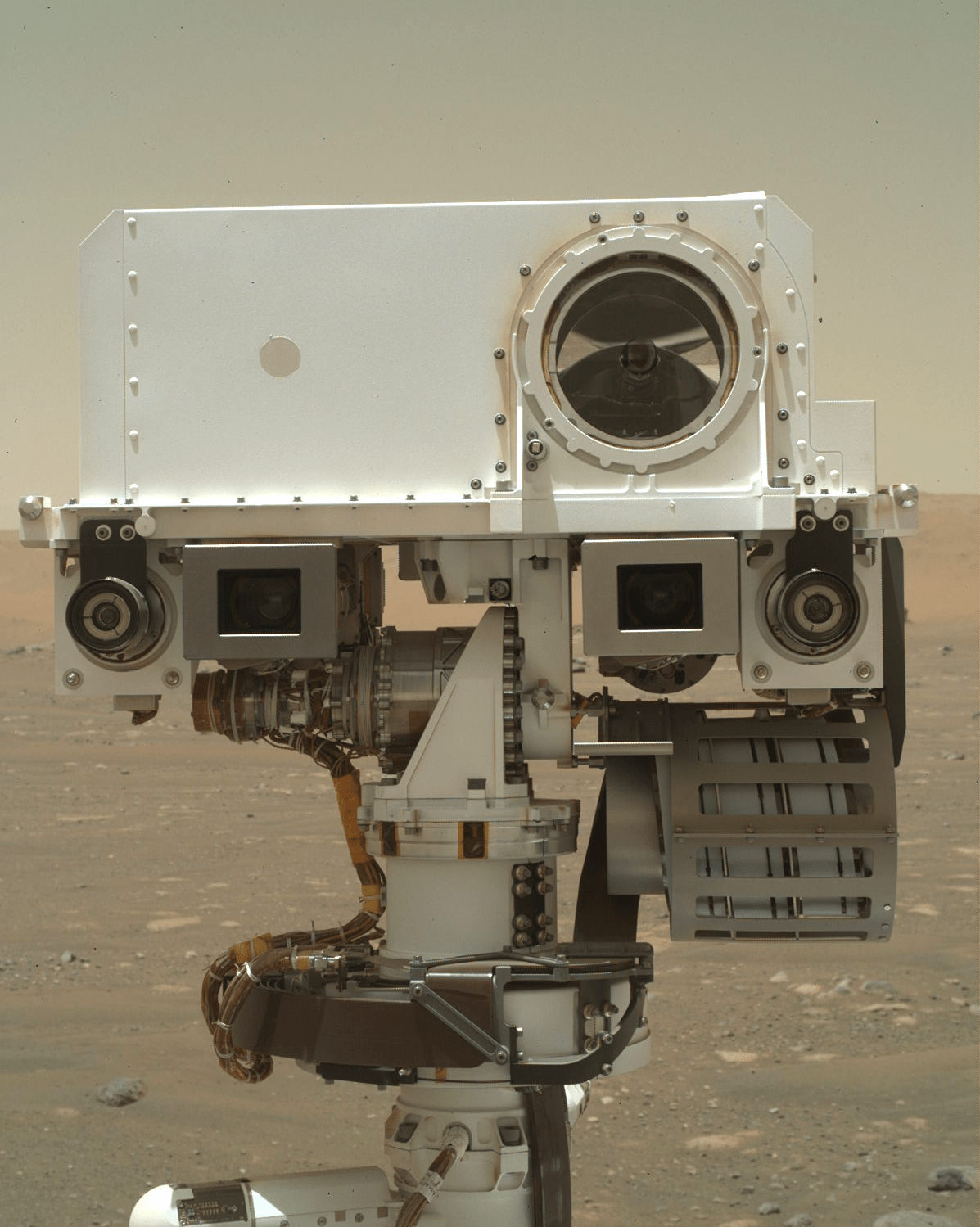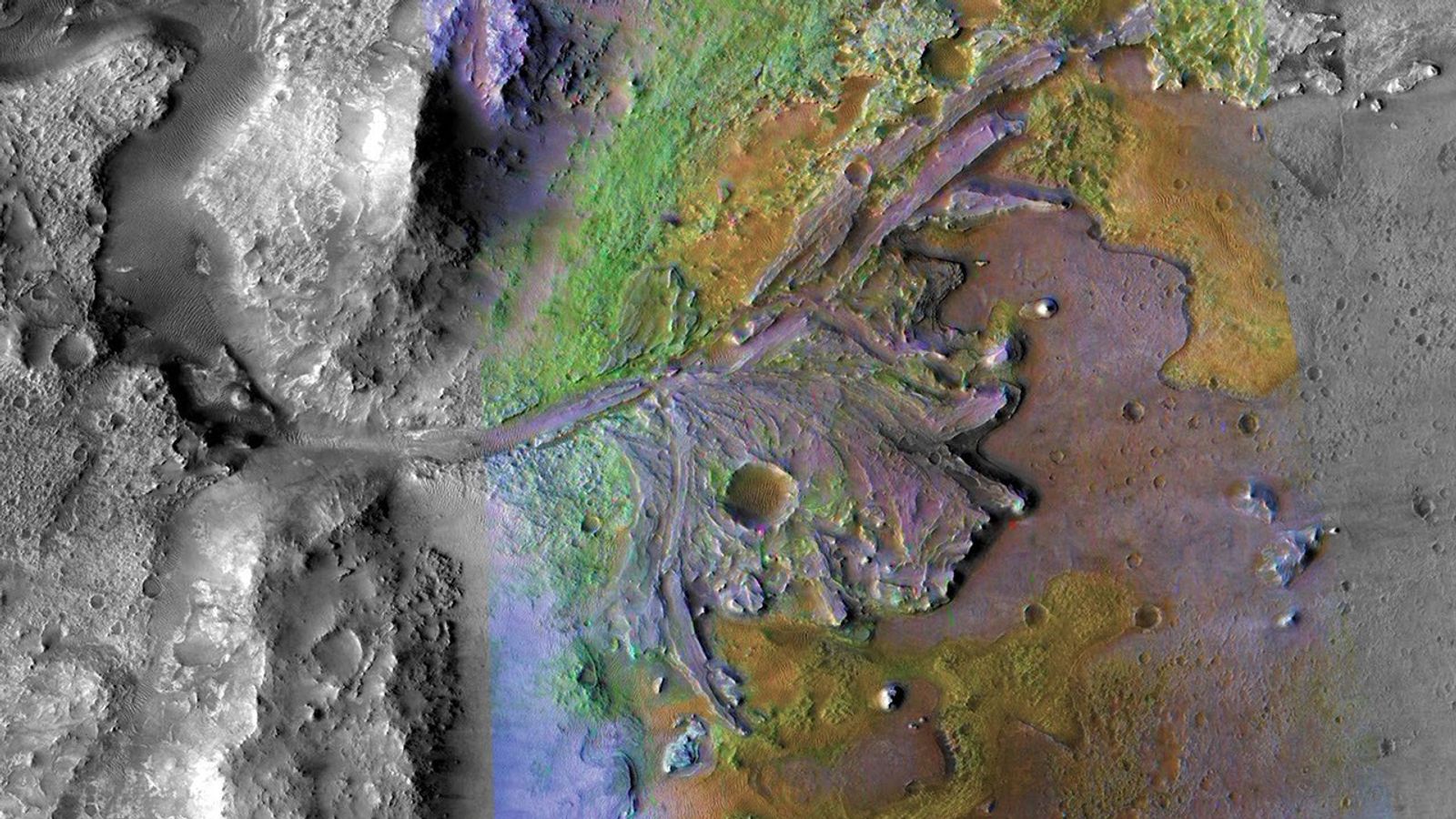2 min read
Curiosity Blog, Sols 4584 – 4585: Just a Small Bump
Written by Abigail Fraeman, Deputy Project Scientist at NASA’s Jet Propulsion Laboratory
Earth planning date: Friday, June 27, 2025
We weren’t able to unstow Curiosity’s robotic arm on Wednesday because of some potentially unstable rocks under Curiosity’s wheels, but we liked the rocks at Wednesday’s location enough that we decided to spend a sol repositioning the rover so that we’d have another chance today to analyze them. The small adjustment of the rover’s position, or “bump,” as we like to call it during tactical planning, was successful, and we found ourselves in a nice stable pose this morning which allowed us to use our highly capable robotic arm to observe the rocks in front of us.
We will be collecting APXS and MAHLI observations of two targets today. The first, “Santa Elena,” is the bumpy rock that caught our eye on Wednesday. The second, informally named “Estancia Allkamari,” is a patch of nearby sand. We’ll analyze this target to understand if and how the sand composition has changed as we’ve driven across Mount Sharp, and to better help us understand how sand may be contributing to future compositional measurements that cover mixtures of sand and rock. MAHLI and ChemCam will team up to observe a third target named “Ticatica,” which is another bumpy rock nearby that looks like it might have a dark patch on its side.
This is the final weekend of this Martian year when temperature and relative humidity in Gale crater hit the sweet spot where conditions are right for frost to form in the pre-dawn hours. We’re taking this last opportunity to see if we can catch any evidence of frost with the ChemCam laser, shooting a sandy (and hopefully cold) portion of the ground in the pre-dawn hours on a target named “Rio Huasco.” Other activities in the plan include atmospheric monitoring, Mastcam mosaics, including a 20 x 3 mosaic of the large boxwork structures in the distance, and a short drive to the southwest to check out a rocky raised ridge.
